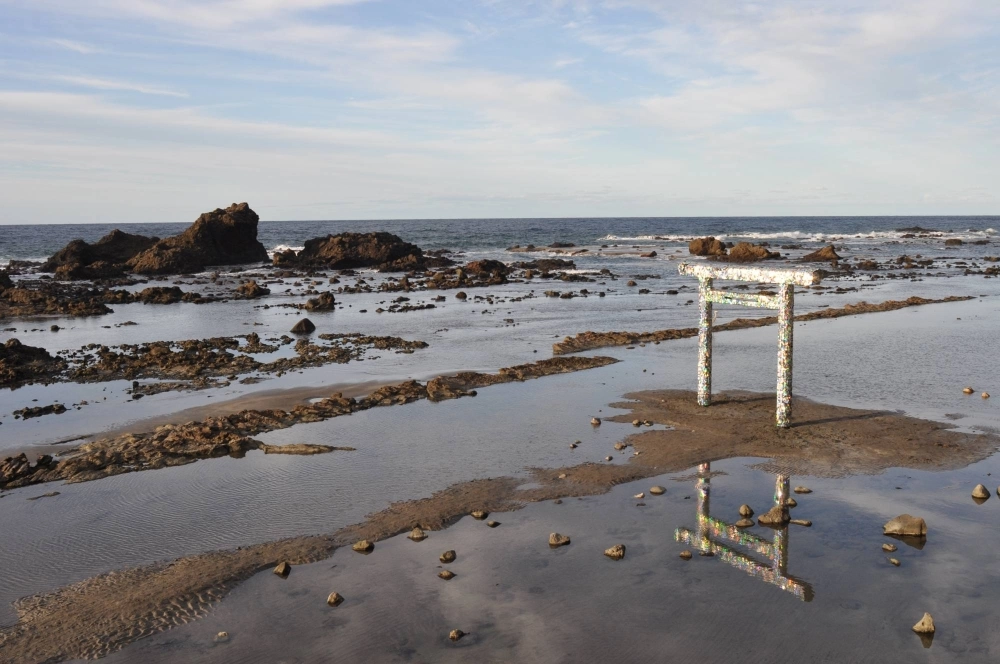Where is it? I scan the road to the left, sweep across to the right, travel its length a second time, squint a bit. The brakes on this bike are rusty, so I’m pedaling molasses-slow as I search the vintage storefronts on this deserted road, cautious not to break the silence with a screech. But why am I worried about noise? There’s no one here.
Then, a sign of life: People below the age of 60, sporting backpacks and sun hats. Tourists! Their phones are held up in ready position, the postures of people in search of directions or an angle for photos. I must be close. Then I spot the gently waving flags in the distance, clean white and bright cyan standing out against the faded shop doors and signage. Bingo. I cycle forward.
Suzu in Ishikawa Prefecture sits at the tip of a peninsula that juts out of the curve of Japan’s back. Since 2017, the city of 12,668 people has hosted the Oku-Noto Triennale, a contemporary art event that bills itself as “saihate no geijutsusai” (“the art festival at the farthest reaches”). The third edition, after being postponed following a 6.5 earthquake in May, opened on Sept. 23 with 34 new works by artists from Japan and abroad.



















With your current subscription plan you can comment on stories. However, before writing your first comment, please create a display name in the Profile section of your subscriber account page.